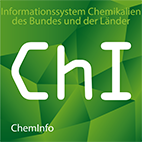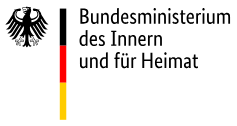
Reliable, comprehensive and up-to-date information on environmentally relevant properties of chemical substances and their mixtures is of great importance for all areas of environmental protection and hazard prevention. This bundled information is used by numerous authorities, press offices as well as private individuals.
ChemInfo provides comprehensive information on chemicals in a wide-ranging catalogue of characteristics. For these substances, physicochemical, ecotoxicological and toxicological parameters as well as their occurrence in the environment are given. In addition, you will find contents that are of direct relevance to environment, consumers, disaster control and occupational safety concerns. This includes for example information on hazards posed by these substances, protective and operational measures or -relevant contents from legal regulations. In addition to data officially compiled for ChemInfo, information from numerous other special databases is included. ChemInfo contains, for example, current information on dangerous goods from the GEFAHRGUT database of the Bundesanstalt für Materialforschung und -prüfung (BAM ), the water hazard classes from the Rigoletto database of the Federal Environment Agency, and operational information from the on-call and initial response information system RESY (Hamburg). A special service of ChemInfo is the provision of legal classifications and regulations in the field of chemicals. The more than 200 laws and regulations, in which the handling of chemicals is regimented, are contained in ChemInfo. Here one can find the essential statements from the legal documents. In addition, the regulations are directly assigned to the respective chemical substances. In total, about 50,000 individual substances (pure substances), about 24,000 component substances (mixtures and preparations) and about 230,000 legal substance classes (legal regulations) can be researched in ChemInfo.
ChemInfo is available in three different versions. While authorities and technical advisors primarily use the entire database, emergency forces of the BOS organisations (authorities and organisations with security tasks) mainly choose the Gefahrstoffschnellauskunft (GSA), a partial database of Cheminfo, for quick and clear chemical hazard information in case of an emergency. Registration is required before using the entire ChemInfo database and the GSA.
The interested public can search the publicly accessible public database without prior registration. For all three data sets (ChemInfo public, internal and GSA), there are different products offered depending on the end device used (desktop computer or smartphone/tablet).
ChemInfo is mainly used by the following groups:
A central product of ChemInfo is the GSA. It provides all emergency services with quick and clear information tailored to their specific needs. Registration is required for the GSA and, for licensing reasons, it may currently only be used by public authority employees , research institutions and organisations with security tasks within the scope of their tasks. Use is free of charge. The GSA is currently available as an online search application, offline desktop application and as a mobile app for smartphones and tablets, also fully offline. Access can be requested via the ChemInfo registration page. You can also find more information in the section DOCUMENTS.
"Chemie im Alltag" (CiA for short) is an app primarily aimed at citizens interested in chemistry. It has been available since October 2021 in the Play Store from Google and in the Apple App Store. General information, e.g. on physico-chemical data and uses of chemicals, can be researched in the app. This is particularly interesting for classic consumer products such as food and cosmetics. These often contain chemicals that are used in or on the body and are therefore particularly relevant for those interested in chemistry. To simplify the entry of very long chemical names, the “Chemie im Alltag” app offers an EAN code scanner with which the ingredients of products can be displayed directly in the app. Individual chemicals can then be tapped from this list and further information on the selected chemical is obtained from the ChemInfo database. Furthermore, the app contains, for example, information on danger signs in the transport sector, E-numbers in food and explanations of danger pictograms that are often displayed on cleaning products. The app is free and publicly available to all.
For more than 25 years, federal and state authorities at different levels of government in environmental protection, population protection and occupational safety have been working together to develop reliable and well-structured data on chemicals and make them available to users. The basis for this cross-national cooperation was the administrative agreement on the "Joint Central Substance Data Pool of the Federation and the States (GBSL)". After two decades of primarily focusing on work for authorities, the partners agreed on broadening the spectrum of users and a technical renewal of the system. The GSBL administrative agreement was then terminated on 31 December 2015 and a cooperation to establish the Federal and States Information System on Chemicals: ChemInfo (VKoopUIS project no. 53) was founded. This cooperation project started on 1 January 2016 with 14 partners. With the completion of the online search application in December 2021, the new development of the system is now completed. In the future, data projects will again be the focus of the cooperation work.
Ministerium für Umwelt, Klima und Energiewirtschaft Baden-Württemberg
Bayerisches Staatsministerium des Innern, für Sport und Integration
Senatsverwaltung für Mobilität, Verkehr, Klimaschutz und Umwelt Berlin
Ministerium für Wissenschaft, Energie, Klimaschutz und Umwelt Sachsen-Anhalt
Sächsisches Staatsministerium für Umwelt und Landwirtschaft






Behörde für Umwelt, Klima, Energie und Agrarwirtschaft Hamburg
Hessisches Ministerium für Umwelt, Klimaschutz, Landwirtschaft und Verbraucherschutz
Ministerium für Umwelt, Klima, Mobilität, Agrar und Verbraucherschutz Saarland
Ministerium für Energiewende, Klimaschutz, Umwelt und Natur des Landes Schleswig-Holstein
Ministerium für Umwelt, Energie, Ernährung und Forsten Rheinland-Pfalz
participating federal states
registered users
CiAapp installations
GSAapp Installations